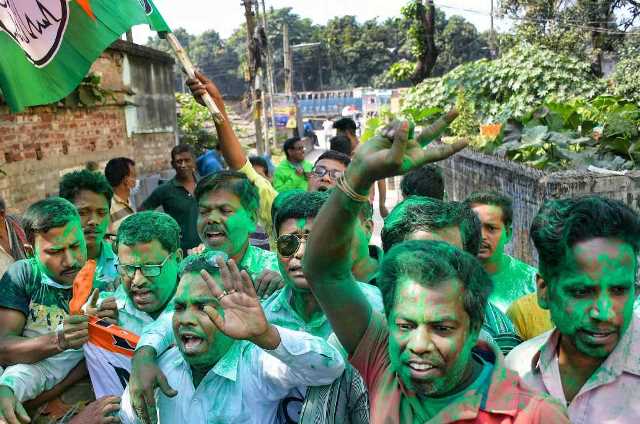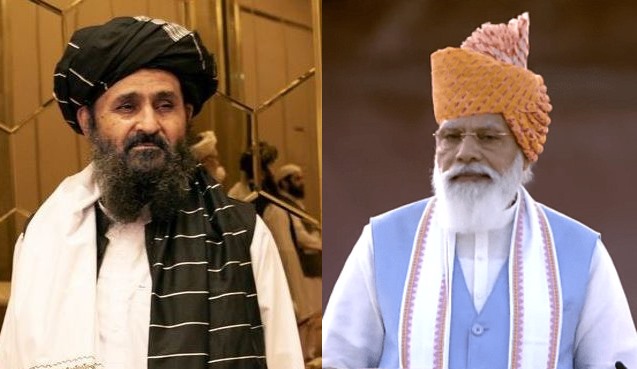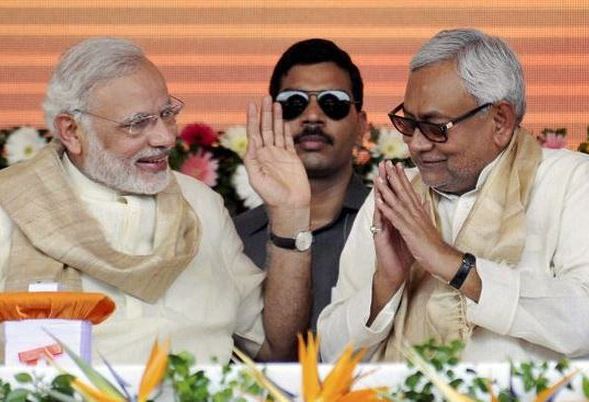Almost no crackers on the festival of lights in pollution-free Kolkata and Bengal, while Delhi chokes and gasps for breath. And even while North India celebrated Deepawali with worshipping Goddess Lakshmi, Bengal worshipped the fiery Goddess, Kali, sometimes darker than darkness, her hair let loose, and at other times, ‘shyama’ – her face in blue.
Following Covid protocols and the no-crackers campaign, A subdued festival it was, though, post-Deepawali, all across Kolkata, the goddess was taken in small processions with the resonant beat of the dhakis and ghantas, and the auspicious echo of ulluk dhwani and shankh, for immersion in various ponds, water bodies and rivers, and this went on all day, until midnight.
Undoubtedly, the festival season has arrived with a heady note in West Bengal despite the sadness and restrictions of the pandemic earlier. The BJP has received a drubbing of its life in four assembly constituencies in the recent byelections. The Durga and Kali Puja also symbolise the universal celebration of ‘shakti’ in the state, where neither Jai Shri Ram nor the Ram temple in Ayodhya could make even an iota of religious or political breakthrough. Nor did the polarising politics of ‘termites’, outsiders, infiltrators, backed by huge money and muscle power, and pomp and show, with the prime minister and his home minister literally camping in the state, turning it almost into an ego issue. The drubbing therefore is yet another reminder that Bengal is continuously showing the way to the nation, and with no holds barred, just as Kerala and Tamil Nadu had shown earlier.
The recent by-elections, therefore, are more than symbolic indicators of the possible decline of the star power of Narendra Modi, and the polarising electoral power of communal and hate politics and Hindutva. The marginal reduction in excise duty on petrol and diesel, under tremendous civil society resentment and opposition pressure, is the first sign of backtracking and retreat by a regime in Delhi which remains absolutely unilateral, arrogant, unmoved and adamant in terms of popular demands, angst or anger, so sure it is of its 31 per cent hardened fanatic vote bank.
Not only have LPG prices been exorbitantly raised suddenly, again and again, inflation in terms of essential commodities, even during the festive season, is sky high. There is deep resentment inside crisis-ridden ordinary families, while millions are jobless or in serious economic distress, and even while a handful of super rich billionaires close to the current regime have reportedly amassed millions during the pandemic.
With UP elections round the corner, and signals from both Western and Eastern UP not bringing happy tides, the BJP, it seems, is clearly worried. Indeed, despite the BJP victories in Assam and the North-east, the signs from Bengal, Rajasthan, Himachal Pradesh and Haryana means a different wind seems to be blowing in the country, and the BJP led by Modi seems on a sticky wicket.
The BJP has been decimated in Bengal. In Dinhata in North Bengal, Trinamool Congress candidate, Udayan Guha, once a Leftist from Forward Bloc with his father once a minister in the erstwhile Left Front government, polled a massive 84.15 per cent of the total votes. Near the Sunderbans in South Bengal, at Gosaba, the Trinamool candidate has polled 87.19 per cent of the total votes. The BJP was reduced to 11.31 per cent and 9.95 per cent of votes in the two assembly constituencies. The CPM stood third. In the four assembly polls, Trinamool won comfortable victories.
Social scientists and political observers point out that the BJP’s communal cards have been thrown into the garbage can in the face of secular politics in Bengal, and due to the grassroots development and social welfare initiatives of Mamata Banerjee, especially among women and the economically weaker sections. Indeed, during the lockdown and pandemic, the scheme of free food at the doorstep for the poor and economically marginalised, has been highly effective and it continues till this day, including other schemes such as Lakshmi Bhandar with monthly cash deposits for poor women and those belonging to the SC-ST communities, along with other schemes in health and education.
Tweeted Chief Minister Mamata Banerjee: “My heartiest congratulations to all the four winning candidates. This victory is people’s victory, as it shows how Bengal will always choose development and unity over propaganda and hate politics. With people’s blessings, we promise to continue taking Bengal to greater heights.”
The Congress had uplifting news from Rajasthan and Himachal Pradesh. In Rajasthan, anti-incumbency is a crucial trend every five years, and the political dispensation inevitably changes. After three years of power in Rajasthan, and with Chief Minister Ashok Gehlot claiming to win another term in the next assembly polls in 2023, the Congress candidates won Vallabhnagar and Dhariawad assemblies with margins of 18,725 and 20,606 votes. Indeed, it is a fact that in the by-elections in the last two years, the Congress has scored victories under the leadership of Gehlot, even while the state BJP is a divided lot with two factions pitched against each other.
Barring Yogi Adityanath in UP, the BJP has changed chief ministers in Uttarakhand and Karnataka, to recover lost ground and fight anti-incumbency. There are reports that the chief minister of Goa might also be replaced after a lacklustre performance and all-round unhappiness against the BJP’s abysmal record in governance in the scenic state. However, there is real bad news for the BJP in Karnataka, especially because it seems to be losing the support base of the formidable Lingayat community which backed its protégé, BS Yedurappa, who was recently removed from the chief minister’s post.
Has the Lingayat community vote got divided, or, is it nursing some deep-rooted angst — that remains a conjecture. The BJP won with its support in Sindgi in the Vijayapura district, but had to face a major embarrassment when it lost the Hanagal constituency in the Haveri district. Significantly, and ironically, it is the home terrain of the new Chief Minister, Basavaraj Bommai, also a Lingayat, but without the clout of Yedurappa. So, will the BJP start looking for a new CM now, even in Karnataka!
The victory of Abhay Chautala from Elenabad in Sirsa district, against the might of the Kanda family backed by the BJP, is significant. Chautala had earlier resigned in support of the farmers’ struggle. The united farmers movement had called upon the people to vote against the BJP-JJP candidate in a predominantly rural constituency. Clearly, despite a tight contest, rural Haryana has voted for the farmers’ struggle.
Seasoned journalist Ramsharan Joshi, who has covered the Hindi heartland for decades, has an interesting, analytical perspective. He says, “When Amit Shah says that the victory of Yogi is a must in the assembly elections in UP so as to pave the way for the victory of Modi in the next Lok Sabha polls, it sounds like a Freudian slip. Why is he linking the two polls – is he not confident of Modi’s charisma in UP or in the rest of the nation, anymore! Indeed, the statement reflects three things: Yogi’s graph is fast declining in UP, Modi is for the first time dependant on Yogi’s victory in the assembly polls, and that the two have become sadly dependent on each other because both have become seriously weak, despite their similar brand of politics. Despite the communal violence in Bangladesh and Tripura, the BJP was unable to polarise in the current by-polls, except in Assam. Where ever there is a strong opposition alternative, the BJP’s communal card fails to play, though this is what they will do again in UP.”
There is another fact. Modi’s vote-catching ability for the Centre, has somehow not really translated always, across the Indian geography, when it comes to state politics and polls. This has yet again been reflected in the recent by-polls. No wonder, the ‘kabristan, namaaz, Pakistan’ discourse of hate politics seems to be getting resurrected all over again. If nothing else, it also reflects a sign of desperation.



